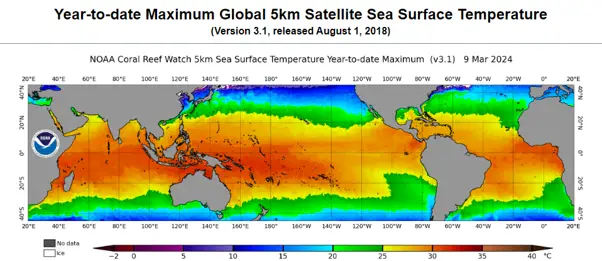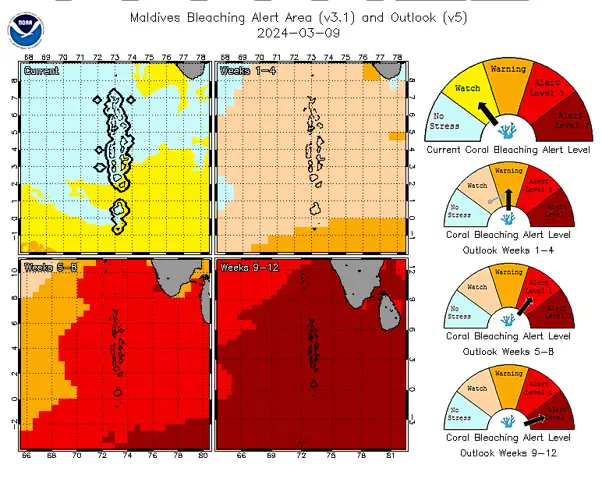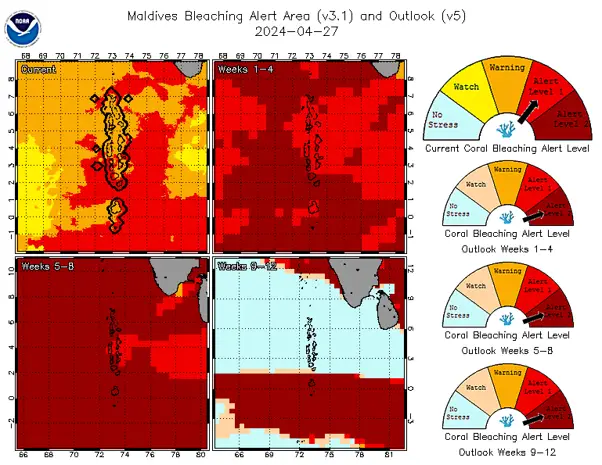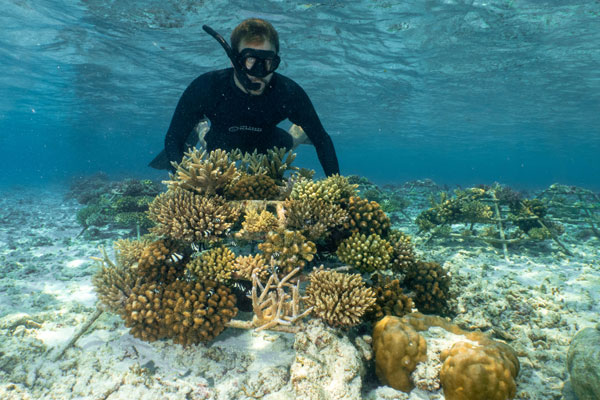The substantial increase in ocean temperature resulting from climate change, in conjunction with the El Niño weather phenomenon, which causes ocean surface waters to warm (Fig. 1), has directly led to the onset of a fourth episode of coral bleaching. In light of these developments, NOAA (the US oceanic and atmospheric observing agency) has enhanced its warning systems to better address the growing severity of coral bleaching and higher mortality rates. The alert has now reached level 5, classified as “near-complete mortality” of corals.

Coral bleaching occurs when corals lose their bright colors and turn white.
How can this phenomenon be explained? Corals are bright and colorful thanks to the microscopic algae called zooxanthellae that live inside their tissues. Algae and corals live in a symbiotic relationship, helping each other to survive. However, when ocean temperatures change – for example, if it’s too hot – corals become stressed and expel algae. As the algae wither, the coral whitens. If the temperature remains high, the coral dies.
The previous global coral bleaching event, which ran from 2014 to 2017, resulted in significant coral loss, with the Great Barrier Reef alone losing almost a third of its coral. This year, the situation has been even more severe, affecting almost all corals in the Southern Hemisphere. These forecasts were made possible by satellite data, which allow us to assess the extent of bleaching by gathering information on sea surface temperature. According to NOAA, the Maldives were also affected by a type 2 alert level (Fig.2).


There are different levels of alert systems:
Stress level | How is it defined ? | Impacts on ecosystems |
No stress | HotSpot < 0 | n/a |
Watch | 0 < HotSpot < 1 | n/a |
Warning | 1 < HotSpot and 0 < DHW < 4 | Possible bleaching |
Alert level 1 | 1 < HotSpot and 4 < DHW < 8 | Probable bleaching |
Alert level 2 | 1 < HotSpot and 8 < DHW | Death probable |
What does the future hold for corals?
Surface water temperature (SST) measurements help us understand the phenomenon of thermal stress in corals. This stress worsens as the thermal anomaly persists. The DHW indicator quantifies the accumulated thermal stress in an area over the past 12 weeks (3 months) by summing all temperatures above the bleaching threshold during this period. When DHW reaches 4°C per week, severe coral bleaching is likely, especially for the most sensitive species. If DHW reaches or exceeds 8°C per week, widespread bleaching and mortality due to thermal stress may occur (see warning systems table).
One solution is to select the most resistant corals. This involves aquaculture (cuttings, growing corals) = coral farms. This has costs, financial + labor.




